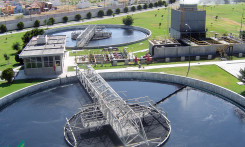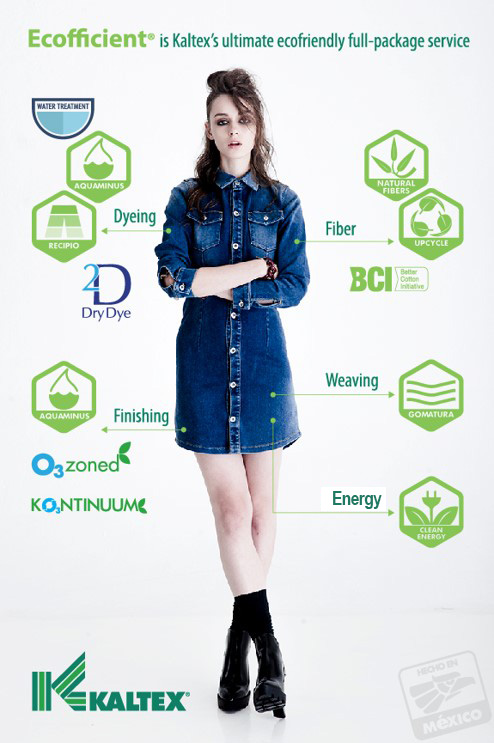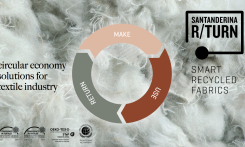
Sustainability Starts with Fiber: Mills Explain Why
Whether you call it a trend, a nuisance or a necessity, denim mills and brands realize sustainability is a cost of doing business.
“We’re all aware that brands have been in search for ‘sustainably produced’ fabrics for a while,” said Ebru Ozaydin, Artistic Milliners director of sales and marketing.
As a vertical denim company with the first LEED garment factory in Pakistan, Artistic Milliners has an opportunity to monitor the demand for more sustainable product from both sides—fabric and garment.
“It is not only using better ingredients such as BCI Cotton, Lenzing fibers and other sustainable fibers, but also a better process, which means to design the product in the most responsible way from the beginning,” Ozaydin added.
Most of the brands that Mexico-based Kaltex supplies with fabric and garments actively pursue the implementation of new sustainable processes. Alvyda Kupinas, Kaltex America design director, said brands look to the mill to help with the development of these new products.

“Modern consumers consider the impact of their dollars spent and they are more likely to
to purchase goods and services from companies that show positive track records in environmental and social values,” Kupinas said.
Jordi Ballús, creative director for Textil Santanderina, believes sustainability awareness has become a major concern among the Spanish mill’s customers.
“There is a real demand for fibers, processes and new production methods that are respectful to the environment,” Ballús said. “Caring for the Earth is not only a trendy concept, it is our passport to the future as there is no ‘Plan B’ for our planet and industry.”
For many mills, sustainability starts with fiber. As a vertical manufacturer, Kaltex has a unique opportunity to offer an efficient closed loop, full package service. The mill uses BCI cotton and sustainable fiber blends with TENCEL®, Repreve®, and recycled cotton to create an ecological foundation. 
Sustainability requires investment in machinery and training. Artistic Milliners has witnessed a growing interest in sustainable garments, especially among U.S. brands. During the mill’s workshops, mill weeks and product presentations, Ozaydin said participants question the EIM (Environmental Impact Measuring software) of each wash.
Prosperity China, a mill known for its use of sustainable fibers, hears more demand for sustainable fabrics, especially from the European markets. “Brands are asking fabrics with renewably sourced materials, more ecofriendly dyeing technologies and cleaner finishing [processes],” said Andy Zhong, Prosperity China marketing director.
As a denim fabric mill, Prosperity utilizes sustainable fibers and yarns like TENCEL®, Lenzing Modal®, BCI cotton, organic cotton and recycled cotton into its production. In 2016, Zhong reported that denim fabrics made with TENCEL® accounted for 10 percent of the mill’s total shipment.
Prosperity has approached sustainability from multiple angles. In addition to tapping Bluesign as their system partner and incorporating a solar system on the rooftop of its warehouse to save 198 tons of CO2 emissions per year, the mill has also introduced more clean dyeing processes with chemical suppliers to reduce the impact on waste water.
Prosperity rolled out Sweet Indigo last season, a new color produced with a non-hydrosulfite process that can significantly reduce the COD level of the sewage water.
Likewise, Kaltex introduced Aquaminus technology, which allows to indigo dye with considerable water and chemical savings. The mill applies laser etching and fading with ozone, which Kupinas pointed out results in huge water savings in the garment manufacturing. “New fabric finishing provides a perfect canvas for superior laser application,” she said.
Artistic Milliner’s design and innovation lab in Dubai is equipped with G2 waterless washing machines, robotic sprays and laser technology, adding an innovative and sustainable edge to their washing facilities. “Water saving is our number one goal,” said Ozaydin. “A focus on re-using and reducing water consumption and managing waste water is as important as the design process.”
Mills are also seeking ways to close the loop. Kaltex recycled all manufacturing scraps back into the product. Artistic Milliners was the first denim fabric and garment manufactures in Pakistan to embark on closed-loop denim project with I:CO.
“The closed loop denim provides the basis for the sustainable, economic solution of the future, or circular economy, and Artistic Milliners is proud to be contributing with approximately one million meters per month of closed-loop denim manufacturing,” Ozaydin said.
As an active player of the circular economy, Ballús said it is in Santanderina’s DNA to invest in the latest technology. On top of using fibers like TENCEL® and RefibraTM, or recycled cotton from used garments, Santanderina is now involved in a global effort to help cleaning the oceans by producing recycled
polyester in a fully vertical process. 
“Every step taken is a clear statement to reduce our impact on the environment,” Ballús said. Through new dyeing processes, Ecolandye and Vitaldye, Santanderina has reduced water and energy consumption by 40 percent and 20 percent respectively.
Ballús added, “Textil Santanderina knows there is no shortcut to a greener future, and we have been addressing this challenge over the past 10 years.”






